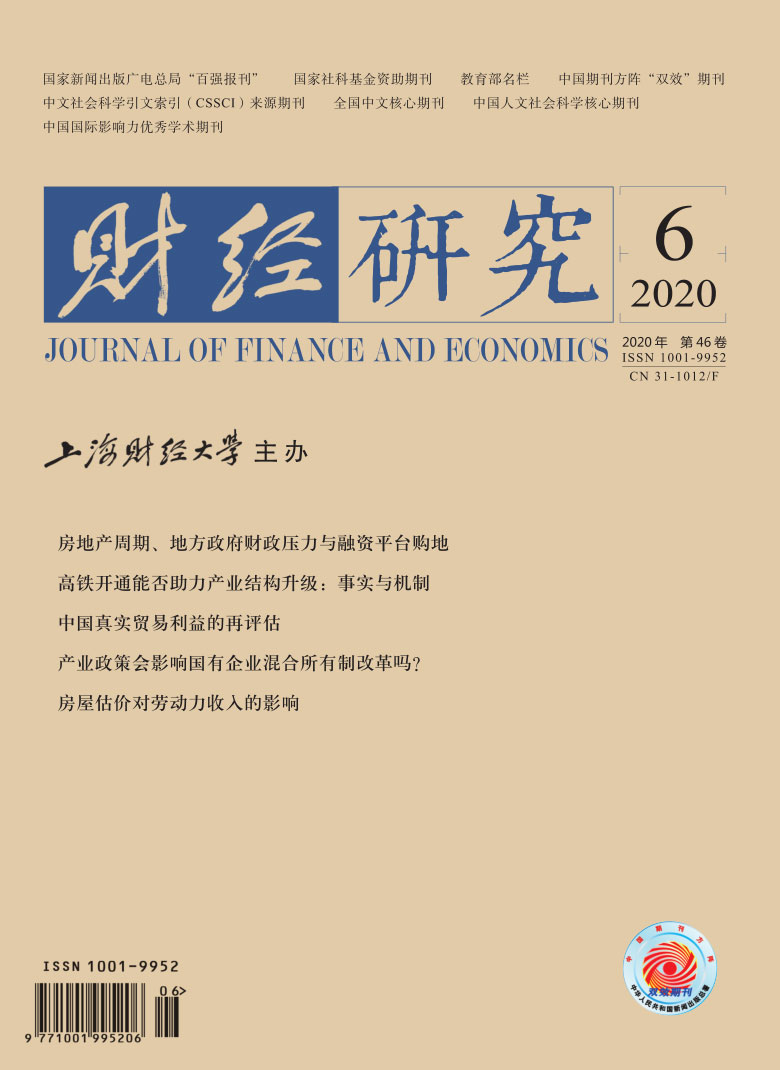中美贸易摩擦的直接原因在于美方认为中方长期存在的贸易顺差,使得中方获取了所谓的“不平等利益”;但是,中国却承担了大量贸易产品生产所导致的环境污染损失。如果忽视该部分,将高估中国的真实贸易利益。文章使用真实贸易隐含污染排放模型核算贸易中隐含的工业污染排放,运用结构性分解模型从排放强度、技术结构、进出口规模、进口品中间投入、进出口结构五个层面分析进出口隐含污染物排放变动的原因,结合ExternE模型和Logistic模型核算贸易中隐含各类污染所带来的经济损失,并将环境成本纳入贸易利益体系,以评估中国真实贸易利益。研究发现:(1)2007−2015年,除了烟(粉)尘的隐含排放量呈V型变化外,更加紧密的行业间生产联系、技术联系以及不断降低的污染排放强度使得其他隐含污染排放均逐年下降,说明减排策略不能依靠牺牲出口规模来实现,而应在污染排放强度、贸易结构升级和污染物末端治理方面做出重点部署。(2)用于出口品生产的进口中间投入需从进口抵减排放中剔除,否则会高估大约23.08%−32.70%的进口隐含废气排放和23.49%−33.59%的进口隐含废水排放,继而导致中国真实贸易利益被高估。(3)工业三废所导致的工业部门出口贸易真实福利的损失每年在9%左右,废气带来的人体健康损失在全部出口隐含排放环境成本中的占比最高,其次是废气带来的农业损失和废水损失。(4)行业贸易贡献率与贸易隐含工业污染物排放、行业经济损失率之间并无直接的必然关系。文章从出口隐含环境成本的角度重新评估了中国的真实贸易利益,回应了所谓的“不公平贸易说”。
中国真实贸易利益的再评估——基于出口隐含环境成本的研究
摘要
参考文献
摘要
关键词
7 彭水军,张文城,孙传旺. 中国生产侧和消费侧碳排放量测算及影响因素研究[J]. 经济研究,2015,(1):168−182. DOI:10.3969/j.issn.1673-291X.2015.01.072
18 Andrew R,Peters G P,Lennox J. Approximation and regional aggregation in multi-regional input-output analysis for national carbon footprint accounting[J]. Economic Systems Research,2009,21(3): 311−335. DOI:10.1080/09535310903541751
19 Duan Y W,Jiang X M. Temporal change of China’s pollution terms of trade and its determinants[J]. Ecological Economics,2017,132: 31−44. DOI:10.1016/j.ecolecon.2016.10.001
20 Hummels D,Ishii J,Yi K M. The nature and growth of vertical specialization in world trade[J]. Journal of International Economics,2001,54(1): 75−96. DOI:10.1016/S0022-1996(00)00093-3
21 Koopman R, Powers W, Wang Z, et al. Give credit where credit is due: Tracing value added in global production chains[R]. NBER Working Paper No. 16426, 2010.
22 Koopman R,Wang Z,Wei S J. Estimating domestic content in exports when processing trade is pervasive[J]. Journal of Development Economics,2012,99(1): 178−189. DOI:10.1016/j.jdeveco.2011.12.004
23 Koopman R,Wang Z,Wei S J. Tracing value-added and double counting in gross exports[J]. American Economic Review,2014,104(2): 459−494. DOI:10.1257/aer.104.2.459
24 Lenzen M,Dey C J. Economic,energy and greenhouse emissions impacts of some consumer choice,technology and government outlay options[J]. Energy Economics,2002,24(4): 377−403. DOI:10.1016/S0140-9883(02)00007-5
25 Machado G,Schaeffer R,Worrell E. Energy and carbon embodied in the international trade of Brazil:An input-output approach[J]. Ecological Economics,2001,39(3): 409−424. DOI:10.1016/S0921-8009(01)00230-0
26 Meng B,Peters G P,Wang Z,et al. Tracing CO2 emissions in global value chains[J]. Energy Economics,2018,73: 24−42. DOI:10.1016/j.eneco.2018.05.013
27 Mirasgedis S,Hontou V,Georgopoulou E,et al. Environmental damage costs from airborne pollution of industrial activities in the greater Athens,Greece area and the resulting benefits from the introduction of BAT[J]. Environmental Impact Assessment Review,2008,28(1): 39−56. DOI:10.1016/j.eiar.2007.03.006
29 Sato M. Embodied carbon in trade:A survey of the empirical literature[J]. Journal of Economic Surveys,2014,28(5): 831−861. DOI:10.1111/joes.12027
30 Shui B,Harriss R C. The role of CO2 embodiment in US-China trade[J]. Energy Policy,2006,34(18): 4063−4068. DOI:10.1016/j.enpol.2005.09.010
31 Weber C L,Peters G P,Guan D,et al. The contribution of Chinese exports to climate change[J]. Energy Policy,2008,36(9): 3572−3577. DOI:10.1016/j.enpol.2008.06.009
32 Wyckoff A W,Roop J M. The embodiment of carbon in imports of manufactured products:Implications for international agreements on greenhouse gas emissions[J]. Energy Policy,1994,22(3): 187−194. DOI:10.1016/0301-4215(94)90158-9
引用本文
李真, 陈天明, 李茂林, 等. 中国真实贸易利益的再评估——基于出口隐含环境成本的研究[J]. 财经研究, 2020, 46(6): 64-78.
导出参考文献,格式为:





 3988
3988  5144
5144

